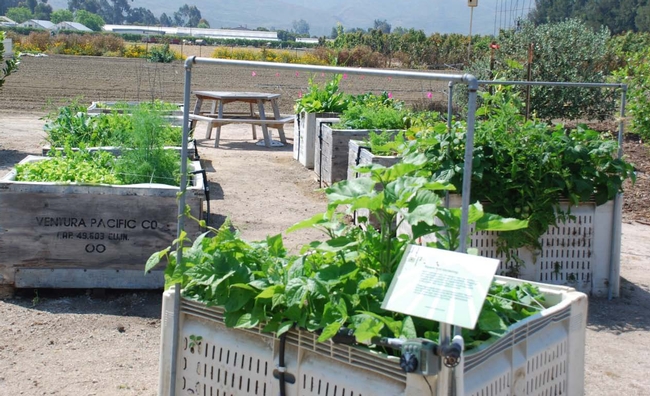- Author: Chris M. Webb
Thanks to the productivity, resiliency and resourcefulness of America’s food producers, United States agriculture is experiencing its most productive period in decades.
From the USDA:
“Today, net farm income is at record levels while debt has been cut in half since the 1980s. Overall, American agriculture supports 1 in 12 jobs in the U.S. and provides American consumers with 86% of the food we consume, while maintaining affordability and choice…Strong agricultural exports are a positive contribution to the U.S. trade balance, support nearly 1 million American jobs and boost economic growth.”
In an effort to provide additional support and opportunities for beginning farmers and ranchers, the USDA has expanded some of their programs. To learn more about these programs, please visit this webpage.
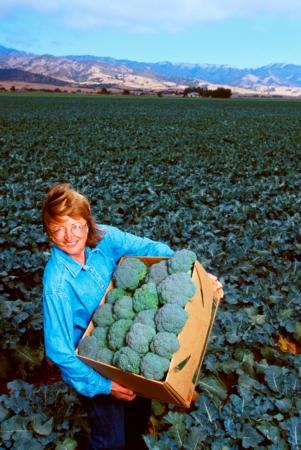
- Author: Chris M. Webb
The 2011 UC Master Gardener Vegetable Demonstration Garden Project has recently finished. A group of certified Master Gardeners and trainees spent time each week from January 27 through December 15 learning vegetable gardening techniques through hands-on experience.
They documented their project so that they could impart lessons learned throughout the2011 project. This article is the eighth, and final, in a series to share this knowledge.
Seed storage:
Saving and storing seeds can provide additional fun and learning opportunities to vegetable gardening.
- Be sure that seeds being used are not beyond their expiration date.
- Consider saving seeds from plants with superior characteristics (e.g., hardy during cool temperatures).
- If you plan to save the seeds from your corn plants, you need to take steps to avoid cross-pollination from other corn plants. To keep heirloom corn pure, you have two options: 1) bag the ears and tassels, and hand pollinate, or 2) arrange it so your corn blooms earlier than any other corn around you.
- The female flowers of each crop can be fertilized only by pollen from male flowers of the same species. Cross pollination, however, can occur between varieties within a species. When crosses occur between members of the same species, we do not see the effect of the cross the first year. However, if the seeds are saved and planted, the plants will produce fruit that will be different from either of the parents.
- There is no reason to soak zucchini seeds in water prior to storage since the pulp can readily be separated from the seed. The pulp on tomato seeds, however, is tightly attached to the seeds making it necessary to soak the seeds for a few days. Once the pulp begins to ferment, it is easily separated from the tomato seeds.
- After soaking tomato seeds in water for two or three days, the viable seeds will sink to the bottom of the container. Dispose of the tomato seeds that float to the surface.
- The way to tell if zucchini seeds are viable is to look for plump seeds. Small flat zucchini seeds will most likely not germinate or will be of poor quality. Since viable zucchini seeds will float in water, the float test used to differentiate poor quality tomato seeds from viable seeds should not be used.
Questions on gardening? Please contact our Master Gardener helpline at 645-1455 or contact them by email at mgventura@ucdavis.edu.
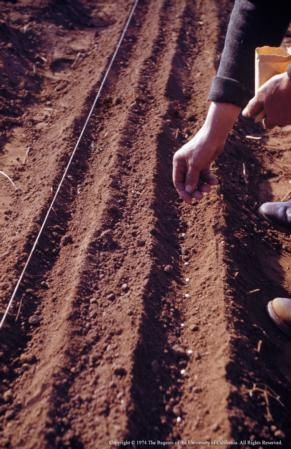
- Author: Chris M. Webb
The 2011 UC Master Gardener Vegetable Demonstration Garden Project has recently finished. A group of certified Master Gardeners and trainees spent time each week from January 27 through December 15 learning vegetable gardening techniques through hands-on experience.
They documented their project so that they could impart lessons learned throughout the2011 project. This article is the seventh in a series to share this knowledge.
Plant protection:
Necessity in protecting plants from vertebrae pests varies depending on location.
- Seedlings should be protected from animals with cages once planted in the soil.
- When constructing cages for plants, design them so they can be easily removed even if the plants become overgrown. Otherwise, the plants may be injured as the cages are removed.
- Be sure to bury the frame of the frame of the cage to prevent mice from crawling under it.
- Small grocery paper bags make nice collars for corn plants.
- Plants placed in soda bottles for protection from critters will eventually grow out of the bottle making them vulnerable to pests. Cages may provide better protection from rabbits and other grazing animals.
- Don’t leave cages on the plants too long. As the plants outgrow the cages, they will become difficult to remove. Also the stem of the plant will be weak since support provided by the cage does not allow full stem development.
Questions on gardening? Please contact our Master Gardener helpline at 645-1455 or contact them by email at mgventura@ucdavis.edu.
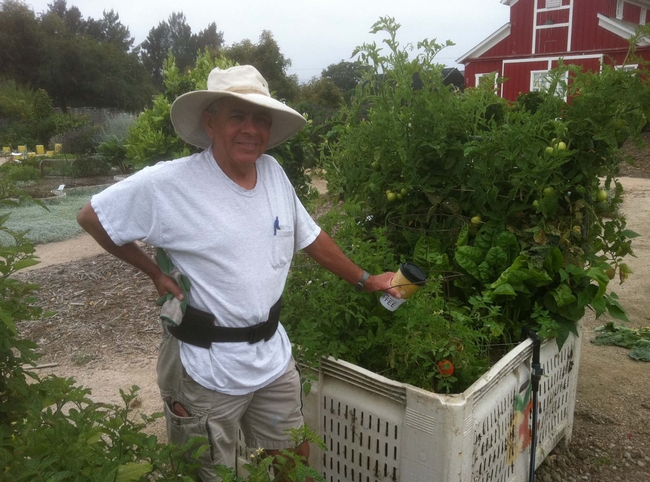
- Author: Chris M. Webb
Local Ventura and Los Angeles County area fine wines, micro-brews, spirits, locally grown and produced foods, and chefs will join together create an exceptional culinary event on Sunday, March 4.
Open to the public, the California Small Farm Conference Tasting Reception is sure to provide great tasting food and drink. As an added benefit, proceeds from the event benefit will local farmers by raising funds to provide conference scholarships. Registration information and links to participating food producers and chefs can be found on this page of the Small Farm Conference website.
The California Small Farm Conference is “the state’s premier gathering of small farmers, agricultural students, farmers’ market managers and others involved in the small farm industry. There is still time to register for the conference. To learn more about the conference or to register, please visit this page.
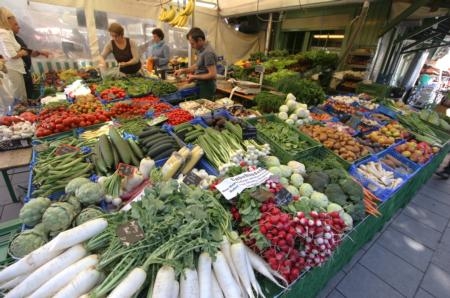
- Author: Chris M. Webb
The 2011 UC Master Gardener Vegetable Demonstration Garden Project has recently finished. A group of certified Master Gardeners and trainees spent time each week from January 27 through December 15 learning vegetable gardening techniques through hands-on experience.
They documented their project so that they could impart lessons learned throughout the2011 project. This article is the sixth in a series to share this knowledge.
Garden tools:
Tools in the garden can save time and effort.
- A hula hoe is a great tool to extract small weeds.
- A pocket knife is a handy tool that should be carried while gardening.
- The blades of bypass pruners and loppers should only be sharpened on one side of the blade. If they are sharpened on both sides of the blade, a small gap will be created between the blades allowing the material being cut to wedge itself between the blades and precluding a clean cut. Anvil-type pruners typically need to be sharpened on both sides of the blade. When sharpening tools, only sharpen surfaces that were originally sharpened at the factory.
Questions on gardening? Please contact our Master Gardener helpline at 645-1455 or contact them by email at mgventura@ucdavis.edu.
